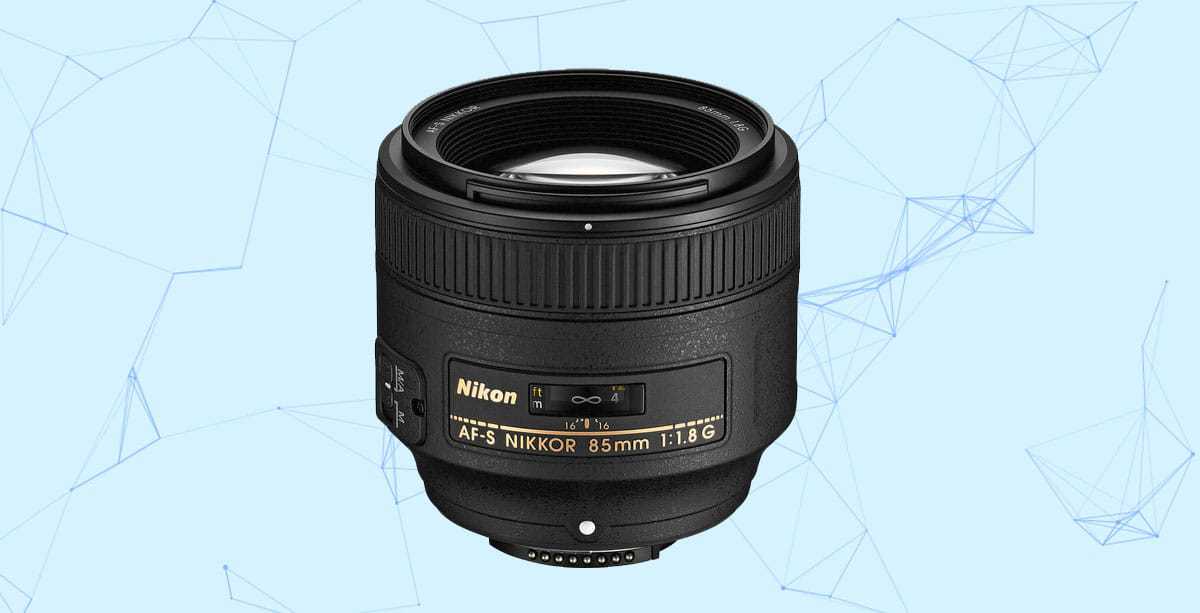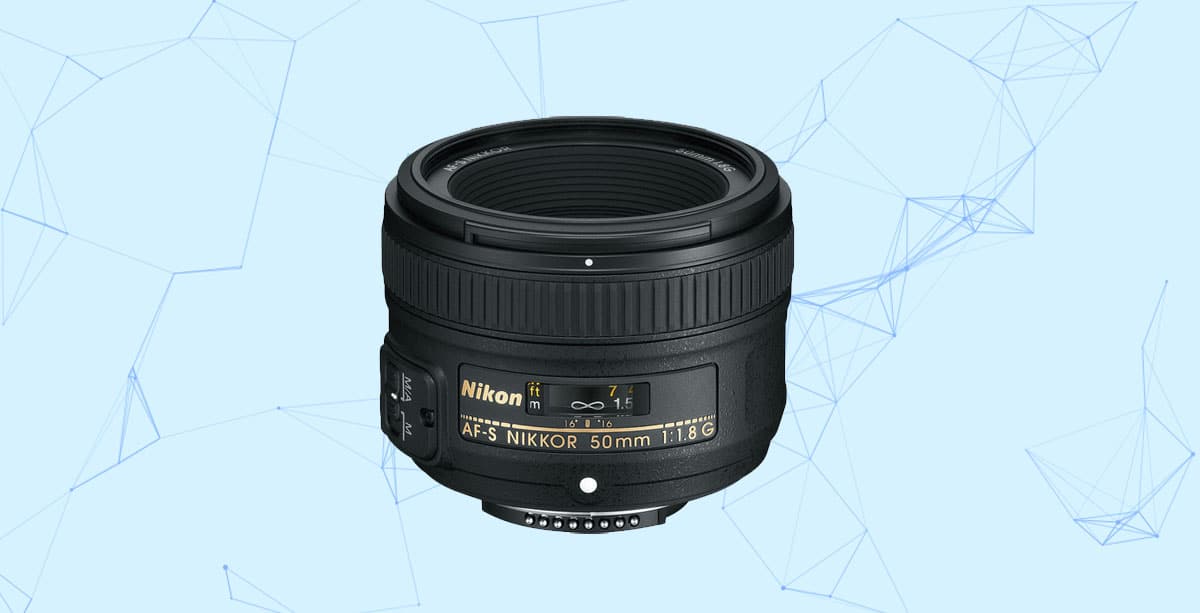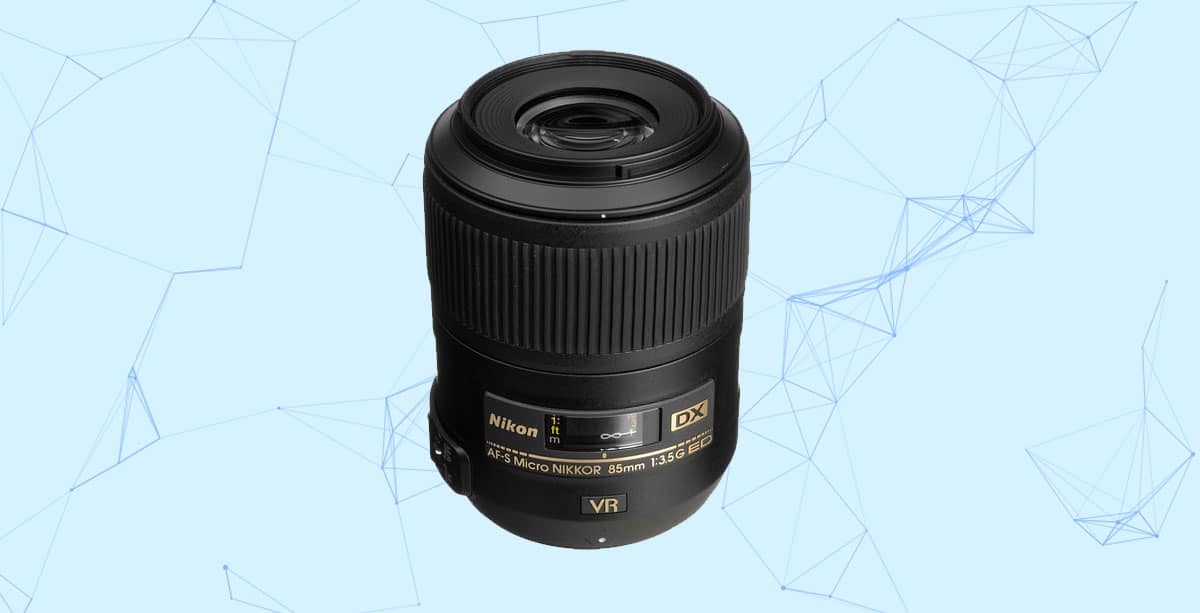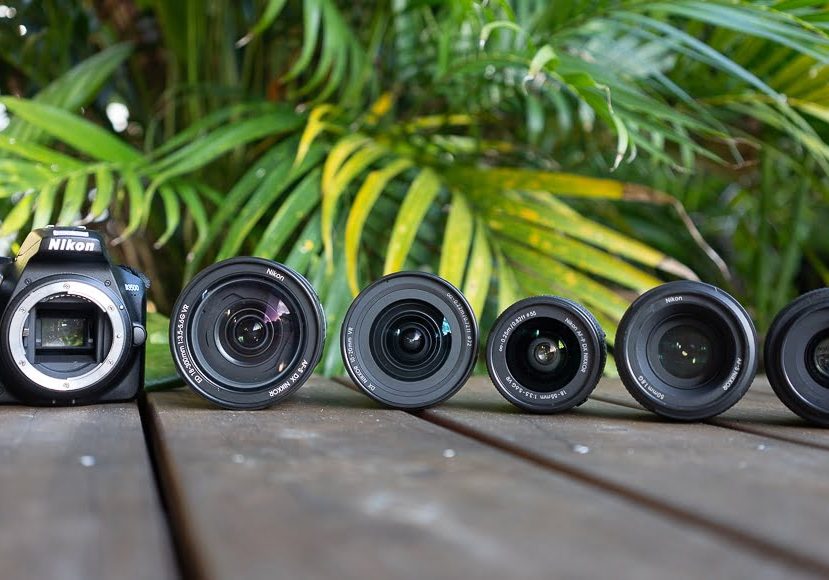
Best Nikon D3300 Lenses
Still shooting with the Nikon D3300? Make sure you attach one of these impressive lenses to really get the most out of it. [Updated for 2023]
Camera Gear Guides | Lens Guides | Nikon Lens Guides | By Don Machuca | Last Updated: March 9, 2023
If you happen to have a Nikon D3300 on your shopping list, or already in your camera bag, good for you!
Though not exactly new as far as cameras go (launch date January 2014), it’s still more than capable by today’s standards. Investing in new lenses for it definitely isn’t something you should feel guilty about!
On the subject of glass, Nikon’s multitude of lenses, even those that date back to the middle of the 20th century, are supposed to work with the D3300… so how on earth do you pick the best ones?
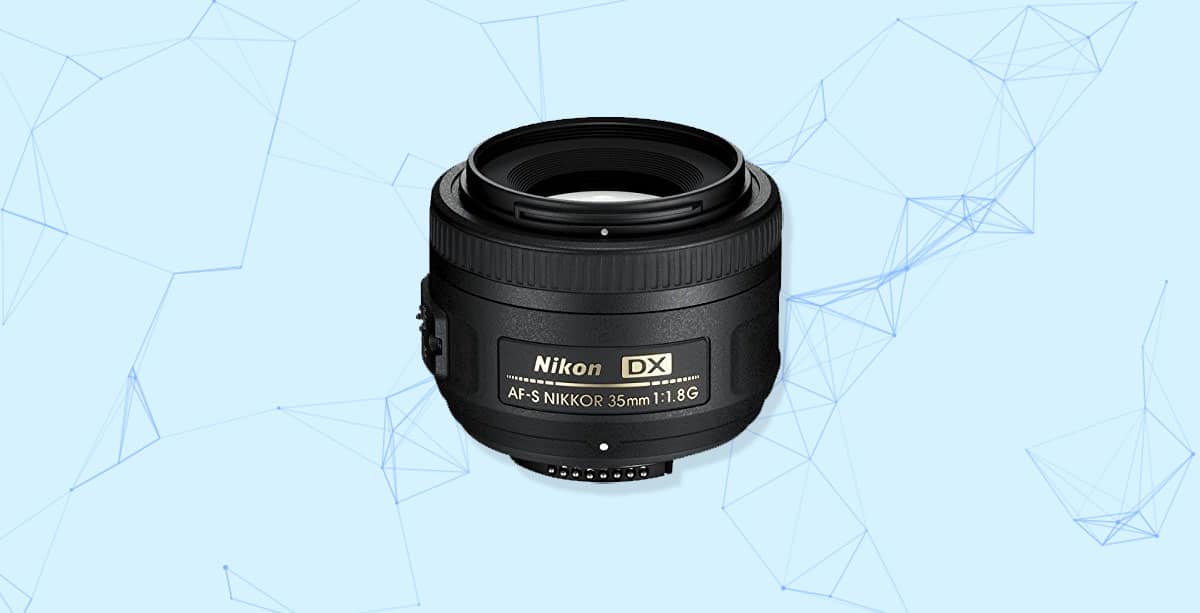
Most affordable way to get high quality images (even in low light), with beautiful background blur. This is the first lens you should buy for your D3300.
For starters, you should consider the value of the camera. While the Nikon D3300 remains competent and still relevant here in 2023, the fact is, it’s a small-body, entry-level DX camera, so it would seem a bit impractical to buy lenses for it that cost an arm and a leg.
This is especially true if you are just getting into DSLR photography, or if you want to see if the hobby (or profession) is something you’d like to pursue further.
Having said that, there are plenty of Nikon lenses available that will bring out the best qualities of the camera, and not leave you having to file for bankruptcy…
Recently, I was able to get my hands on some great Nikon FX and DX lenses, so I put together this list of what I believe are the best bang-for-buck options, helping you maximize the potential of your D3300.
Best Nikon D3300 Lenses in 2023
| Image | Product | Features | |
|---|---|---|---|
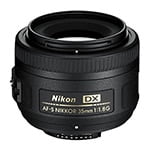 | Nikon 35mm f/1.8G DXBEST ALL ROUND PRIME |
| View Price → |
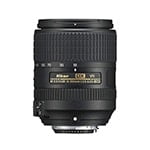 | Nikon 18-300mm f/3.5-5.6 DXBEST ALL ROUND ZOOM |
| View Price → |
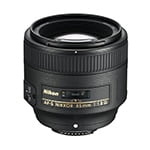 | Nikon 85mm /1.8 FXBEST FOR PORTRAITS |
| View Price → |
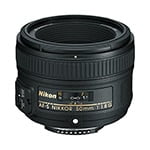 | Nikon 50mm f/1.8 FXBEST VALUE PRIME |
| View Price → |
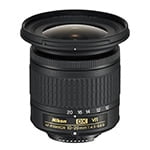 | Nikon 10-20mm f/4.5-5.6 DXBEST WIDE ANGLE |
| View Price → |
 | Nikon 85mm f/3.5 Micro DXBEST ALL ROUND MACRO |
| View Price → |
What Lenses Work With the Nikon D3300?
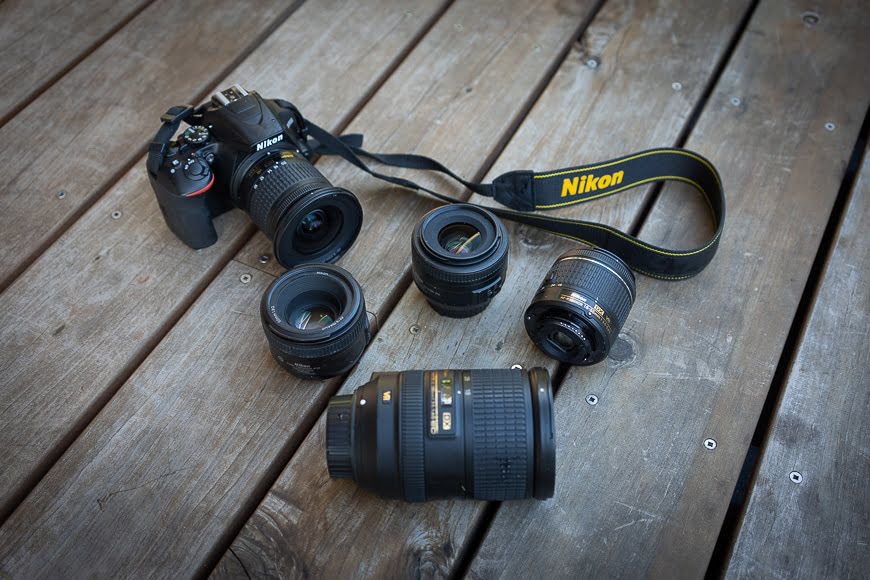
Just because the Nikon D3300 is a crop sensor camera, it doesn’t mean you need to stick to DX lenses.
Like all Nikon cameras, the DX format D3300 uses F mount lenses. This means that all AF-S and AF-P Nikon lenses (lenses with built-in autofocus motors) will work on it.
Of course, like anything else, there’s a widespread when it comes to factors like quality, price and features so it makes sense to find the best balance given what you want to accomplish.
Being a DX camera, the Nikon D3300 has a smaller sensor than the FX body cameras (APS-C vs 35mm). As such, you’d think it would work best with the sensor size-specific DX lenses… right?
Actually, FX lenses (those designed for full frame camera sensors), can still work well on DX camera bodies like the D3300 but – you just have to remember that using FX lenses on DX bodies results in a multiplier effect of 1.5 x, effectively extending the focal length of the lens.
Simply put, a 50mm FX lens will become a 75mm lens (50×1.5)… which isn’t necessarily a bad thing.
If you’re considering upgrading to an FX body at some time in the future, investing in the (more affordable line) of FX lenses might be a good idea.
Even if you’re not planning to make the jump to full frame, the FX lenses listed below will help you get the most out of the Nikon D3300 – it’s a bit like putting premium fuel in your family car ;-)
Nikon D3300 Lens Reviews
In order to be able to cover any situation, any serious DSLR photographer will need a mix of lenses in their kit.
Typically, you would need a wide-angle lens to take in big scenes, a normal lens for the things around you and a telephoto lens (such as one of these) for reaching out.
You can even throw in a macro lens (confusingly called a ‘micro’ lens by Nikon), for the tiny things that you otherwise wouldn’t be able to shoot.
Here are the lenses I highly recommend for your Nikon D3300 – I believe that any of these are worthy of space in your precious camera bag!
Nikon 35mm f/1.8G DX
Focal Length: 35 mm (50 mm equivalent)
Weight: 197 g (6.95 oz)
Size (Diameter x Length): 70 x 52.5 mm (2.8″x 2.1″)
Filter Diameter: 52 mm
Minimum Focus Distance: 0.3 m (0.99 ft)
The Nikon 35mm f/1.8G DX was actually the first prime lens I ever invested in, back in the days when I shot with a Nikon D40. I remember marvelling at how my images looked so much better with this lens, especially when compared to the kit lens, or even more expensive zooms.
When I was learning photography, I forced myself to do photo-a-day project with this lens – I called it ‘Project 35’ – 35 days, 35 photos, all shot with a 35mm lens. To say that this one project helped me improve at photography faster than anything else would be an understatement.
When coupled with the much-improved 24.2MP sensor of the Nikon D3300, the Nikon 35mm f/1.8G DX creates an impressive combination. I’d go as far as to say this one lens is a must for Nikon DX shooters – definitely the best Nikon 35mm lens for the APS-C format.

The light weight of the Nikon 35mm f/1.8 makes it a great everyday lens | 1/500 f/9 ISO200
While zooms are certainly more versatile, there’s just something about prime lenses that can’t be beaten, and the Nikon 35mm f/1.8G DX is no exception.
For starters, it has fewer moving parts. This means this well-constructed lens is far lighter than a zoom and is therefore a lot easier to lug around.
The 35mm f/1.8G DX is billed as Nikon’s best 35mm for DX sensors so it’s no surprise that it makes for a very good normal lens. Pair it with the Nikon D3300, and you get a highly capable, light, yet relatively compact setup that allows you to capture very high-quality images.
Let’s not forget, too that the 35mm 1.8G is a fast and sharp walk-around lens that is capable of taking incredible handheld images even in low light.
It doesn’t end there. The 35mm 1.8G features the fast and silent AF-S autofocus system so you can count on it to lock onto its target quickly. This gives you the time you need to fire off a few shots before the situation changes or the subject moves away.
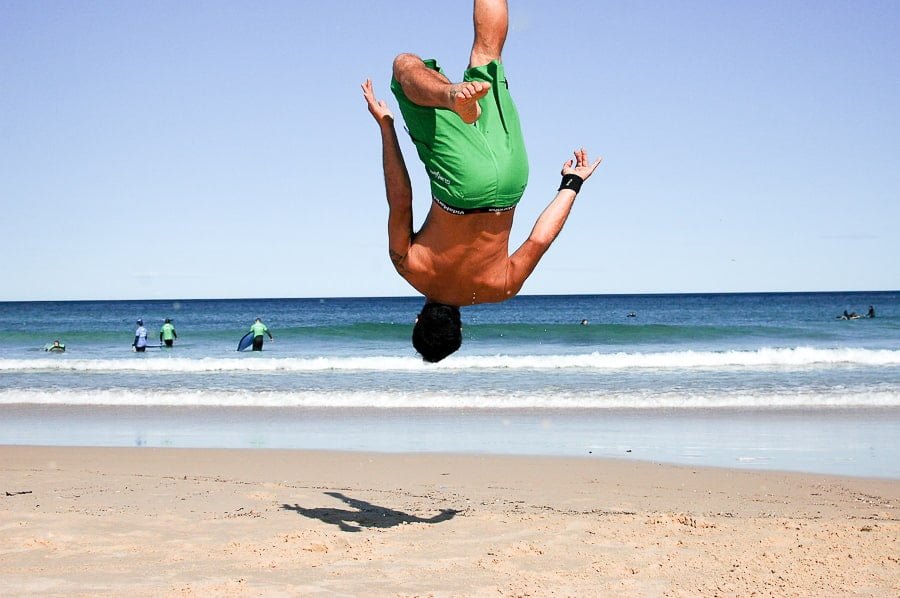
The Nikon 35mm f/1.8 paired with the D3300 becomes a compact and portable combination | 1/3200 f/6.3 ISO200
Unlike many other lenses, the Nikon 35mm f/1.8G DX doesn’t have many moving parts (just the internal rear element). This means that the lens doesn’t suck in air that may contaminate the works. Besides, the metal mount has a rubber gasket built in so this helps keep the internals of both camera and lens dust-free.
At around 200 bucks, this lens definitely won’t break the bank, and you’re going to be getting a great deal for your money. You should expect the lens to be mostly plastic, but it does get the job done properly and that’s what counts.
All in all, this is the lens that really opened my eyes to what’s capable with a camera. Going from the D3300’s ‘kit lens’ to something like this doesn’t take a big investment, but it’ll make the single biggest improvement to how your image can look – it’s no exaggeration to say that this one lens could transform your photography.
Nikon 18-300mm f/3.5-5.6 DX
Focal Length: 18-300 mm (27-450 mm equivalent)
Weight: 550 g (19.4 oz)
Size (Diameter x Length): 78.5 x 99mm (3.1″ x 3.9″)
Filter Diameter: 67 mm
Minimum Focus Distance: 0.48 m (1.6 ft)
One of the most useful things you can have in your arsenal of lenses is a reliable zoom. Not only does such a lens allow you to capture a wide variety of images in an instant, but it also effectively replaces a lot of other lenses that you may otherwise need.
The Nikon 18-300mm f/3.5-5.6 DX is one such lens, offering focal lengths that range from wide to telephoto.
If you were to get nothing else for your Nikon D3300, the Nikon 18-300mm f/3.5-5.6 DX lens is all you would need to cover just about any situation.
When used with the Nikon D3300, the Nikon 18-300mm f/3.5-5.6 DX lets you reach even further, because the 1.5x crop factor that’s introduced by the DX sensor ‘stretches out’ the focal length. In other words, the stated 18-300mm focal lengths (x1.5) become 27-450mm.
Though still hefty at 550 grams (19.4 oz), it helps a lot that the 18-300 DX is almost 300 grams (10.6 oz) lighter than the version it replaces. This ultimately translates to less strain, and therefore less fatigue, especially if you’re shooting all day.
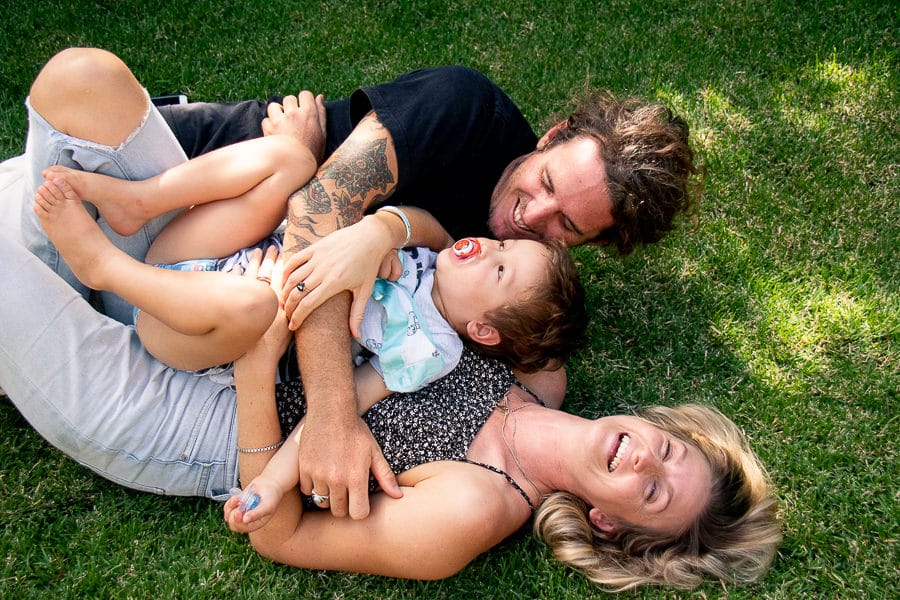
The Nikon 18-300mm f/3.5-5.6 is impressively sharp | 1/2000 f/4.5 ISO800 @ 34mm
What’s more, this lens is made especially for DX cameras so it works perfectly with the D3300. Also, its VR (vibration reduction) function and its AF-S auto focus system when partnered with steady hands, allow for impressively sharp handheld images even at the telephoto end, or in low light.
As far as build quality goes, the Nikon 18-300mm f/3.5-5.6 DX stands up alright to the odd knock but is mostly made out of plastic. Don’t let this deter you though because the lens’s ergonomics are great, making the lens a real joy to use.
Be aware though that because its elements extend externally, it does tend to suck in and blow out air quite a bit. I wouldn’t recommend using it when on safari, or somewhere excessively dusty, for example, unless you’re using some kind of ‘jacket’ such as this.
Unlike other wide to telephoto zooms, this one differs as it has a particular capability that sets it apart: macro. At its far end, this lens can close focus at .48m (1.6 feet) – this additional functionality makes it even more useful to have around.

Zoomed in at 165mm, the Nikon 18-300mm f/3.5-5.6 is still sharp and contrasty| 1/400 f/5.6 ISO800
At around $700, the Nikon 18-300mm f/3.5-5.6 DX is certainly not the cheapest lens you can get for your D3300, but it is surely among the most capable. I definitely think it’s a lens to consider if you need an all-in-one that has the versatility to do a good all-round job.
Though the D3300 is still an entry-level camera (more here) and showing some signs of age, it does have a lot of features that allow it to stay relevant in today’s crowded camera market.
To be able to coax the best performance out of it, you will need equally capable attachments of which, the Nikon 18-300mm f/3.5-5.6 DX comes in near top place.
Nikon 85mm f/1.8 G FX
Focal Length: 85 mm (127.5 mm equivalent)
Weight: 351.3 g (12.39 oz.)
Size (Diameter x Length): 80 x 73 mm (3.1″ x 2.9″)
Filter Diameter: 67 mm
Minimum Focus Distance: 0.8 m (2.6 ft)
Looking for a fast, quiet prime for your Nikon D3300 that you can shoot from farther out? If so, one of the lenses you’ll want to check out is the Nikon 85mm f/1.8 G.
Though designed for full-frame FX cameras, this lens works very well with the D3300, giving an effective focal length of 127.5 mm (85mm x 1.5 crop factor).
What this translates to is the ability to take great low light images from farther back without the heft of a heavy telephoto lens.
Focal lengths around the 100mm-mark are considered excellent for producing flattering portraits of people. Facial features and body parts are rendered realistically, and the overall perspective and balance of the subject is represented faithfully.
This longer focal length, couple with a fast f/1.8 aperture, means that the lens is not only fast (i.e. you can shoot it in low light without needing to increase your ISO, or decrease your shutter speed), but it also has great looking bokeh.
For those unfamiliar, bokeh is the quality of the background blur. Depending on the character of the lens, this element can either enhance the image or take away from it, and thankfully, the bokeh produced when shot wide open with this lens is nothing short of beautiful – backgrounds melt away in a sea of creamy colours.
Like other primes, the Nikon 85mm f/1.8 G has fewer moving parts and is, therefore, less susceptible to wear than a zoom would be.
Also, there are no components on this lens that move except for its internal focusing mechanisms so, there really is no issue with the lens introducing contaminants into the system.
What’s more, the Nikon 85mm f/1.8 G is Nikon’s sharpest 85mm lens by far and surprisingly outperforms even the vaunted (and significantly pricier) 85mm f/1.4G, especially in sharpness stakes.
Sadly, however, it isn’t the best-made and can be a bit too “plasticky” for the tastes of more discerning shooters. Don’t let this put you off though, as the 85mm 1.8G has great ergonomics and is not something you need to fiddle with a lot.
If you’re willing to overlook the somewhat consumer-grade build, you’re assured of a tool that will perform very well with your D3300, and help it achieve its maximum potential.
Nikon 50mm f/1.8 G FX
Focal Length: 50 mm (75 mm equivalent)
Weight: 185 g (6.6 oz.)
Size (Diameter x Length): 72 x 52.5 mm (2.8″ x 2.1″)
Filter Diameter: 58 mm
Minimum Focus Distance: 0.45 m (1.5 ft)
If you’re on a budget and are looking for a reliable prime to pair well with your Nikon D3300, one of the lenses that you should definitely check out is the Nikon 50mm f/1.8 G.
Being one of Nikon’s sharpest lenses (it’s sharp at any aperture), the Nikon 50mm f/1.8 G is one of those lenses that definitely deserves a space in your gear bag.
Though designed for full frame FX bodies, this lens works extremely well with 1.5x crop factor DX cameras like the Nikon D3300, and effectively becomes a 75mm lens.
This makes it great for portraiture, whilst still being able to fill the role of a walk-around lens nicely, provided of course you’re willing to move around a bit to get everything in the frame.
Having a very generous wide-open aperture of f/1.8, the Nikon 50mm f/1.8 will allow you to take quality, hand-held pictures in low light without needing a flash.
Another plus is the quiet, fast-focusing AF-S system to make sure that you can lock onto your subjects before the moment passes.
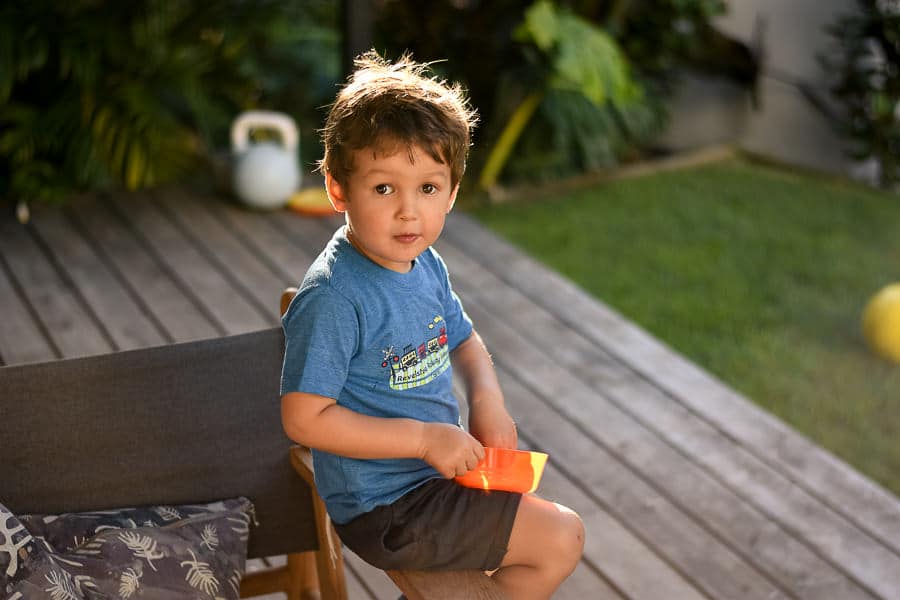
The Nikon 50mm f/1.8 DX produces great bokeh (out of focus area) | 1/640 f/1.8 ISO 100
Being consumer-grade, the lens feels a tad plasticky, and its build quality is nowhere near that of Nikon’s higher-end lenses. That said, however, the 50mm f/1.8G certainly isn’t frail and is more than of capable standing up to everyday use.
It’s light weight 185g (6.6 oz.) also means that it’s the perfect lens to throw in a jacket pocket with not much thought. If you have a heavier, more flexible zoom lens attached to your camera for most of the day, you can quickly swap to this nifty-fifty when the light starts to drop… or for moments when you’d like to take advantage of a blurred background.
Speaking of which, the bokeh produces by this lens is impressive, especially considering its low price point. This makes it a favourite for portrait shooters, or anyone who needs to be able to blur the foreground/background in order to make their subjects ‘pop’.
With a price tag of just over $200, the 50mm f/1.8 FX is a great deal, especially considering that it’s tack sharp, capable of shooting in low light, and produces lovely bokeh.
The AF-S focusing system is also a nice touch, so really, you’re getting a pretty sweet deal if you decide to pull the trigger on it :-)
All told, this is lens is a no-brainer and one that you need to get especially if portraiture is something that tickles your fancy.
Nikon 10-20mm f/4.5-5.6 DX
Focal Length: 10-20 mm (15-30 mm equivalent)
Weight: 227 g (8 oz.)
Size (Diameter x Length): 77 x 73 mm (3.03″ x 2.87″)
Filter Diameter: 72 mm
Minimum Focus Distance: 0.22 m (0.7 ft)
If you’re trying to put together a decent set of lenses for your Nikon D3300, one you’re definitely going to need is an ultra-wide zoom like the Nikon 10-20mm f/4.5 – 5.6 DX.
Made specifically for DX sensors like the one found on the D3300, this lens allows you to capture the big picture with ease because of its wide focal range.
You should note though, that the 1.5x crop factor of the DX sensor tightens up the range a bit so the 10-20mm DX’s field of view out of the D3300 is effectively 15-30mm… which still translates to ultra-wide angle to wide angle, and a really useful focal range.
At just over $300, the Nikon 10-20mm f/4.5/5.6 DX is definitely at the affordable end of the lens spectrum and great bang for the buck.
It comes generously endowed with VR (vibration reduction), as well as the AF-P focus system, both of which allow it to produce sharper, shake-free images consistently.

The Nikon 10-20mm f/4.5-5.6 is an affordable way to create great images | 0.8sec f/5.3 ISO 100 @ 17mm
You can typically shoot wide angle lenses at much slower shutter speeds than ‘normal’, or tele-photo’ focal lengths, meaning that you can expect some pretty crazy-low ISO/shutter speed handheld shots in low light with this lens, thanks to the additional VR, which performs surprisingly well on a lens of this price.
On the subject of focusing, the built-in AF-P focusing system on the 10-20mm DX is a focus-by-wire arrangement, as no physical connection exists. Turning the focusing knob simply activates circuitry that talks to the camera and tells the pulse motor on the lens what to do.
Of course, as with any other lens, there are a few drawbacks to contend with. One is needing to update your D3300’s firmware to the latest version, as the AF-P system will not work on older software.
Also, there is significant distortion at the 10mm end, but this is thankfully easily corrected in Lightroom, with just one click of a button (you can also apply a ‘Lens Correction’ action as an import preset).
Lastly, as is the case with most Nikon lenses at this price point, you’ll need to be rather careful with the lens mount of the Nikon 10-20mm f/4.5 – 5.6, as it’s regrettably, made from plastic.
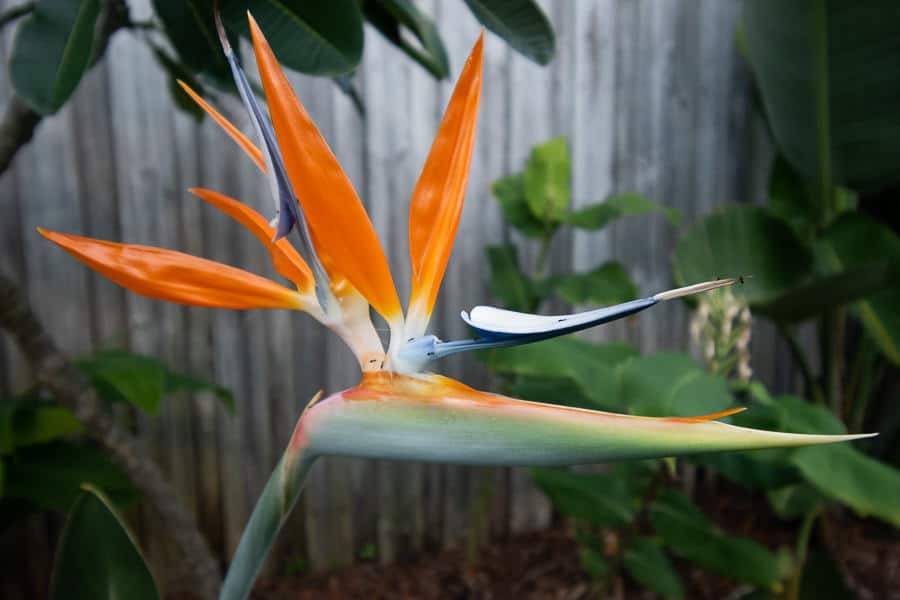
Get up close with the Nikon 10-20mm f/4.5-5.6 to produce nice background blur | 1/50 f/5.6 ISO100 @10mm
Those minor cons aside, however, you’ll be able to produce powerful, immersive imagery with the wide-angle focal range, and the excellent Vibration Reduction will get you out of trouble in low light.
This is a great value lens that will set your photos apart from everything else produced with the Nikon D3300 – it’s not surprising that the wide-angle vista hashtags get the most ‘hearts’ on Instagram – everyone loves a good wide angle landscape shot, and this is one lens capable of producing them.
Nikon 85mm f/3.5 DX Micro
Focal Length: 85 mm (127.5 mm equivalent)
Weight: 352 g (12.4 oz.)
Size (Diameter x Length): 73 x 98.5 mm (2.9″ x 3.9″)
Filter Diameter: 52 mm
Minimum Focus Distance: 0.286 m (0.9 ft)
After you’ve put together a set of lenses that cover wide to telephoto, it’s time to round out the collection by getting a great DX macro lens.
The Nikon 85mm f/3.5 DX Macro is a great choice since it works so well with your Nikon D3300.
While not exactly top of the line, this 85mm DX macro is more than good enough for the serious amateur and should allow a knowledgeable D3300 user to come up with images that will attract and hold the attention of viewers.
Macro images offer us a perspective on life that we don’t normally see, and when the shots are done with the right skill they can be quite impressive. Under a macro lens, something as ordinary and familiar as a flower or an insect can turn into something never before seen.
Like telescopes, macros lenses can unlock the door to entire new vistas, entire new worlds to explore with your camera. The Nikon 85mm f/3.5 DX Macro makes this more affordable for D3300 owners.
One thing to note – it’s typical for macro photographers to use smaller apertures (f/11+), in order to get as much in focus in their image as possible. This means that the maximum apertures of a macro lens is largely irrelevant, as long as you have enough light.
The Nikon D3300 can be pushed comfortably to mid-range ISOs, but due to the limitations of the sensor, anything in the triple figures should be avoided. This means that you’ll either need a lot of light (midday sun) or a flash/continuous strobe, to be able to light your macro shot – food for thought before you start getting down on hands and knees over that dead beetle!
At just over $550, the Nikon 85mm DX macro isn’t exactly spare change but is still fairly priced as far as macro lenses go. It’s also generously endowed with VR and AF-S autofocus, and is able to reproduce 1:1 images on a DX sensor – this is pretty much essential for a good macro lens.
As far as build quality goes, it’s important to keep in mind that some corners have been cut to keep the price down as low as possible. As such, expect to see a plastic lens which wouldn’t take much abuse if you don’t treat it well.
Having said that, however, the 85mm f/3.5 DX macro it’s worth remembering that a macro lens is unlikely to be kept on your camera all the time. While you can use this lens to shoot portraits in a pinch, the relatively slow (f/3.5) aperture won’t make it a regular fixture to your camera as a walk-around – my point being, it can rest safely in your bag until needed, and thus, may not need to be built like a tank.
On the other hand, the Nikon 85mm DX macro makes up for its plastic construction with great ergonomics, typical of a quality Nikon lens. It’s easy to handle and easy to use. Manual focusing, in particular, is a snap and should help the shooter dial in the exact focus needed for the image – another essential feature of a good macro lens.
All things considered, this lens would make for a good addition to your lineup, as it gives you another world to explore.
Not only will a macro lens allow you to maximize your camera’s functionality, but it also gives you the opportunity to expand your skillset and enhance your creativity.
FAQ’S
What lenses fit Nikon D3300?
Some of the lenses that fit Nikon D3300 include:
- Rokinon 8mm F/3.5
- Sigma 18-200mm F3.5-6.3 DC Macro OS HSM 3. Nikon 70-300mm F/4.5-5.6
- Tokina 11-16mm F/2.8
- Nikon AF-S DX NIKKOR 35mm f/1.8G
What lenses are compatible with Nikon D3300?
Here’s a list of some of the lenses compatible with Nikon D3300:
- Sigma 30mm F1.4 Art DC HSM
- Nikon 18-300mm f/3.5-5.6 DX
- Nikon 35mm f/1.8G
- Nikon 50mm F/1.8
- Nikon 40mm F/2.8 Micro
Recommended Nikon D3300 Lenses | Final Words
Despite its billing as an entry level camera, the Nikon D3300 is capable of producing fantastic images in the right hands.
It’s perfect for beginners even here in 2023, and delivers great bang for the buck – you can’t get many DSLR cameras of this calibre for such a low price.
However, it’s important to get the most out of the 24.2 MP CMOS DX sensor by attached good glass to the end of you D3300. A kit lens can only get you so far (see: why are kit lenses bad?) – it’s only when you start experimenting with fast primes and higher quality zooms, that you’ll really get the most out of the camera’s capabilities.
My advice is always to get the best camera you can afford, then invest slowly in a selection of lenses (see guide). The more you use different focal length lenses, you’ll quickly be able to decide upon a favourite (focal length or focal range), which will help you make smarter decisions moving forward.
Some may prefer the flexibility of a zoom; others may like the creative potential of a fast prime – you’ll never know unless you experiment a little with all the choices available to you ;-)
Did I miss anything? Let me know in the comments below, and be sure to check out our guides to D3400 lenses and D3200 lenses too.

Most affordable way to get high quality images (even in low light), with beautiful background blur. This is the first lens you should buy for your D3300.
Don Machuca is a writer and professional photographer/videographer from Manila, Philippines who specializes in landscapes, events and product photography.






